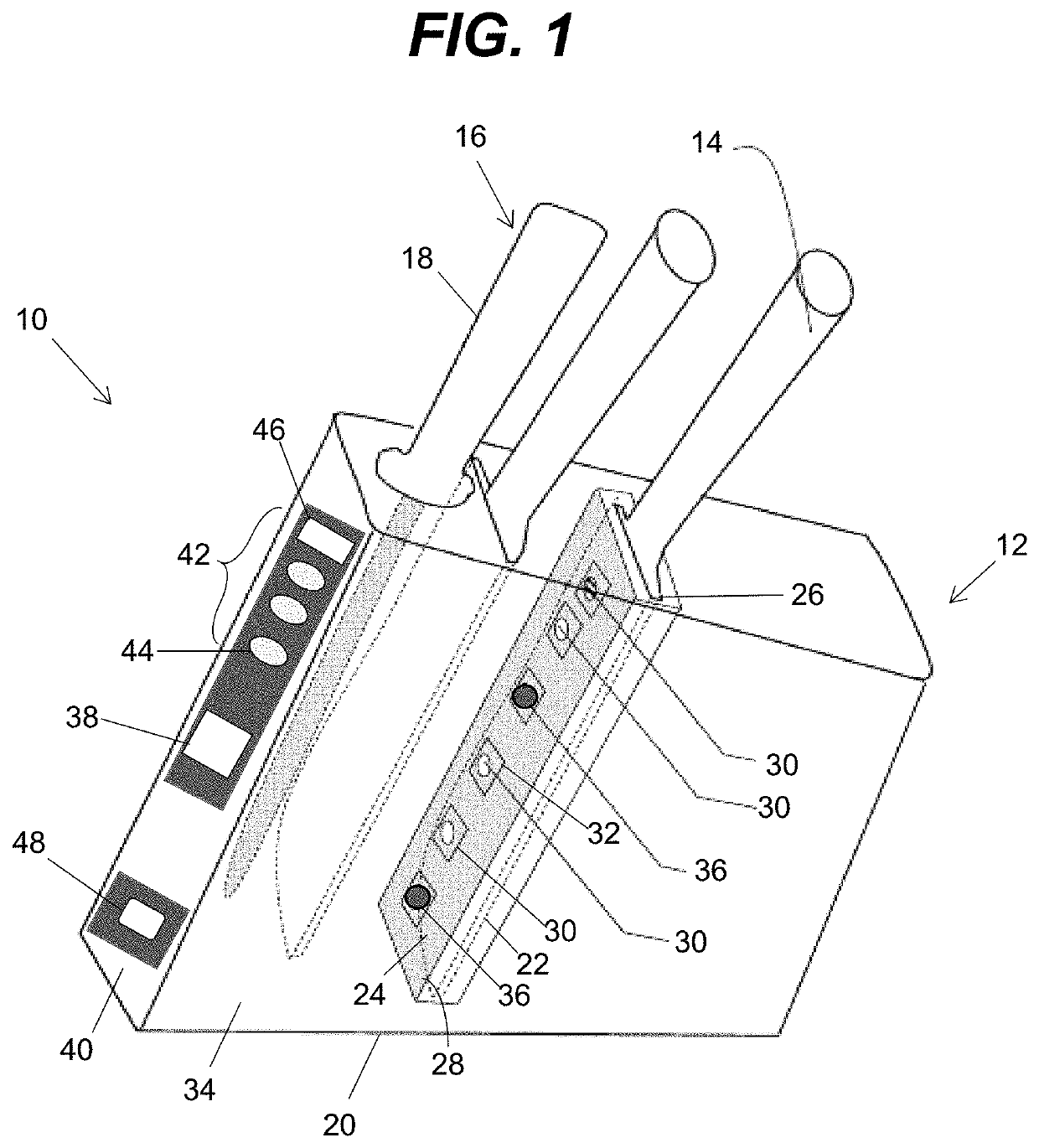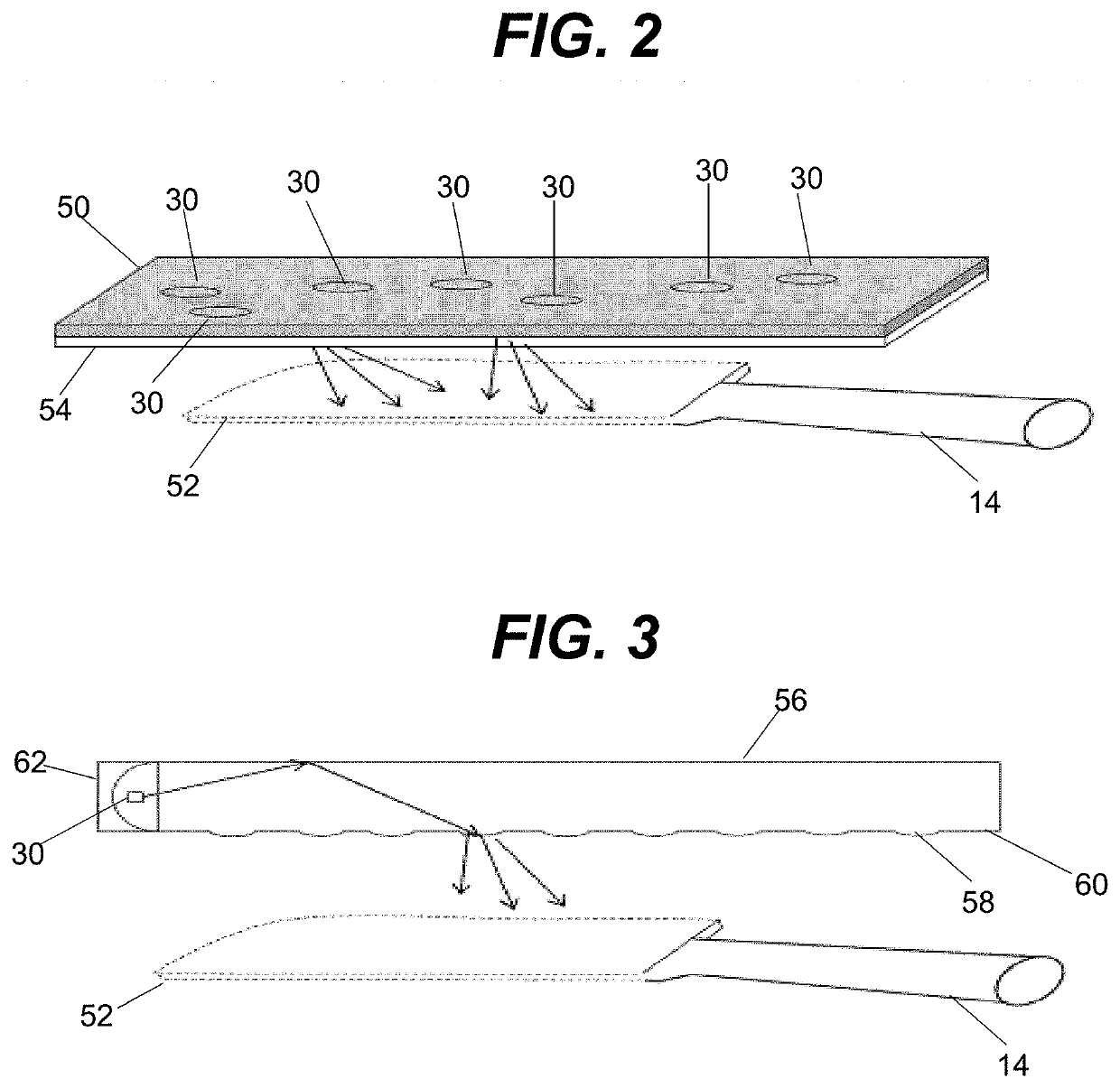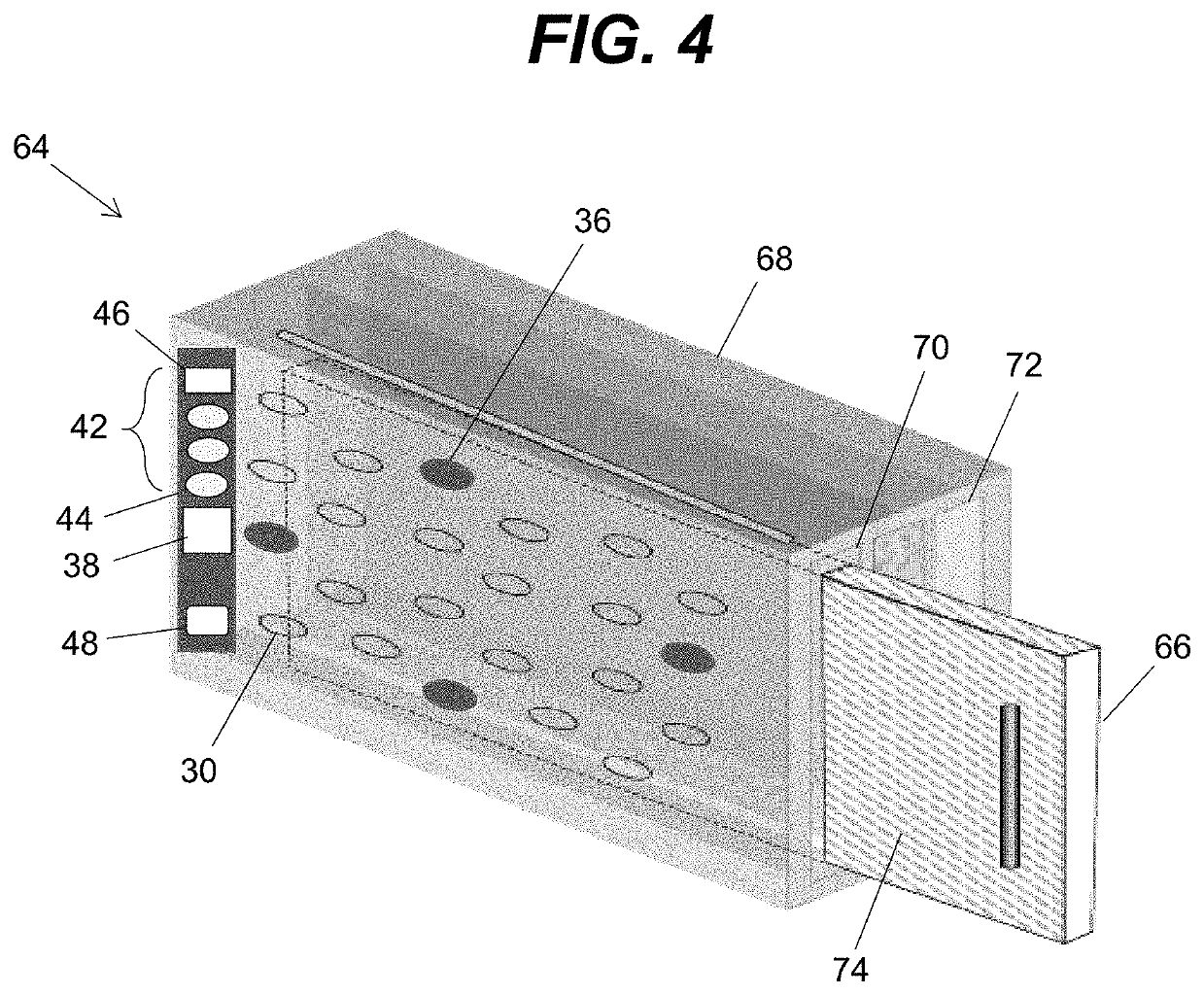Ultraviolet irradiation of food handling instruments
a technology of ultraviolet light and food handling equipment, applied in the field of ultraviolet light irradiation, can solve the problems of harmful microorganism growth on food handling equipment, incorrect water temperature and lax food preparation practices, and serious illness
- Summary
- Abstract
- Description
- Claims
- Application Information
AI Technical Summary
Benefits of technology
Problems solved by technology
Method used
Image
Examples
Embodiment Construction
[0043]Aspects of the invention are directed to solutions that use ultraviolet radiation to irradiate food handling instruments for purposes of sterilization, disinfection, cleaning and / or treating of microorganisms, parasitic agents, bacteria, viruses, germs or other harmful contaminants. Sanitizing generally means reducing the number of bacterial contaminants to a predetermined safe level. Disinfecting generally means destroying pathogenic and other types of microorganisms, while sterilizing can be more extensive in that it kills all microbial forms and / or includes destroying the ability of the microbial forms to reproduce. Cleaning and / or treating, which can be used interchangeably, generally means any actions, steps and the like that effectuate at least one of sanitizing, disinfecting or sterilizing.
[0044]Ultraviolet radiation, which can be used interchangeably with ultraviolet light, means electromagnetic radiation generally described as having a wavelength ranging from approxim...
PUM
| Property | Measurement | Unit |
|---|---|---|
| wavelength | aaaaa | aaaaa |
| wavelength | aaaaa | aaaaa |
| peak wavelength | aaaaa | aaaaa |
Abstract
Description
Claims
Application Information
 Login to View More
Login to View More - R&D
- Intellectual Property
- Life Sciences
- Materials
- Tech Scout
- Unparalleled Data Quality
- Higher Quality Content
- 60% Fewer Hallucinations
Browse by: Latest US Patents, China's latest patents, Technical Efficacy Thesaurus, Application Domain, Technology Topic, Popular Technical Reports.
© 2025 PatSnap. All rights reserved.Legal|Privacy policy|Modern Slavery Act Transparency Statement|Sitemap|About US| Contact US: help@patsnap.com



